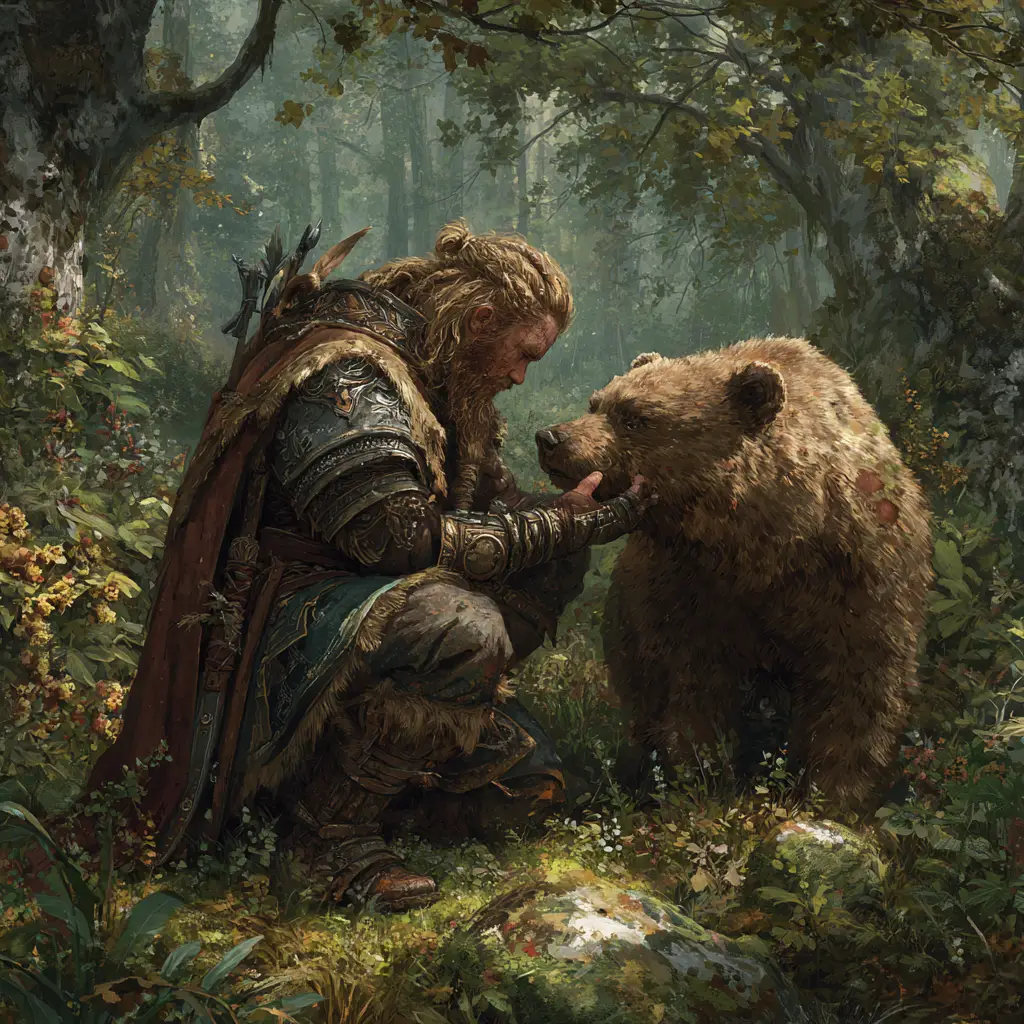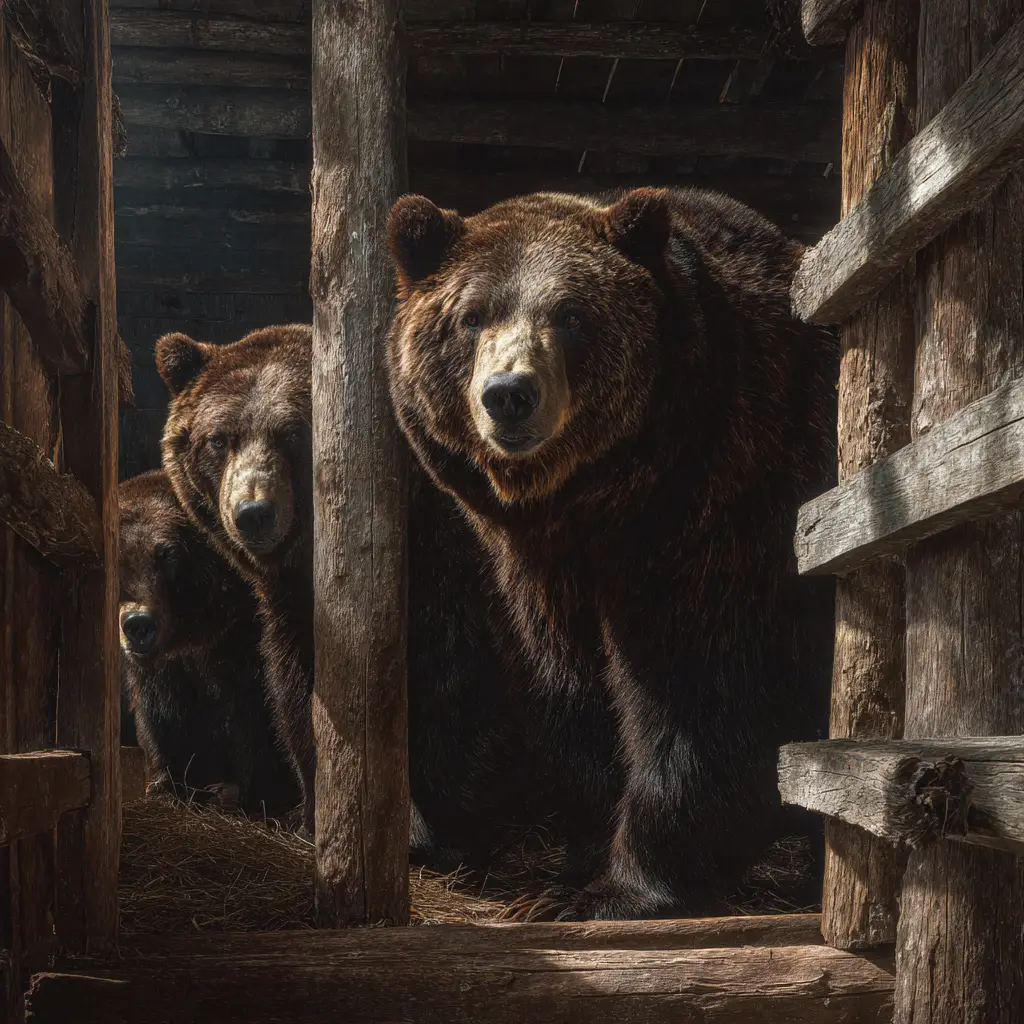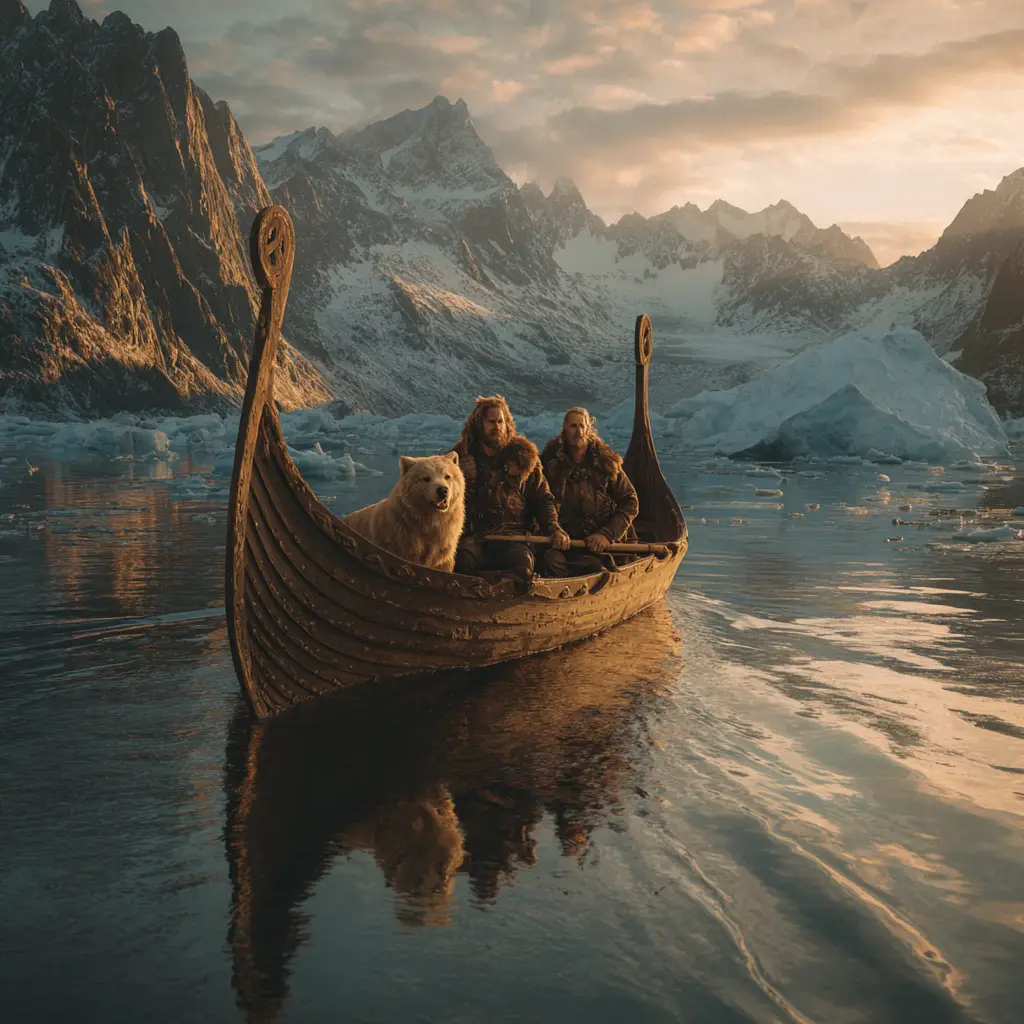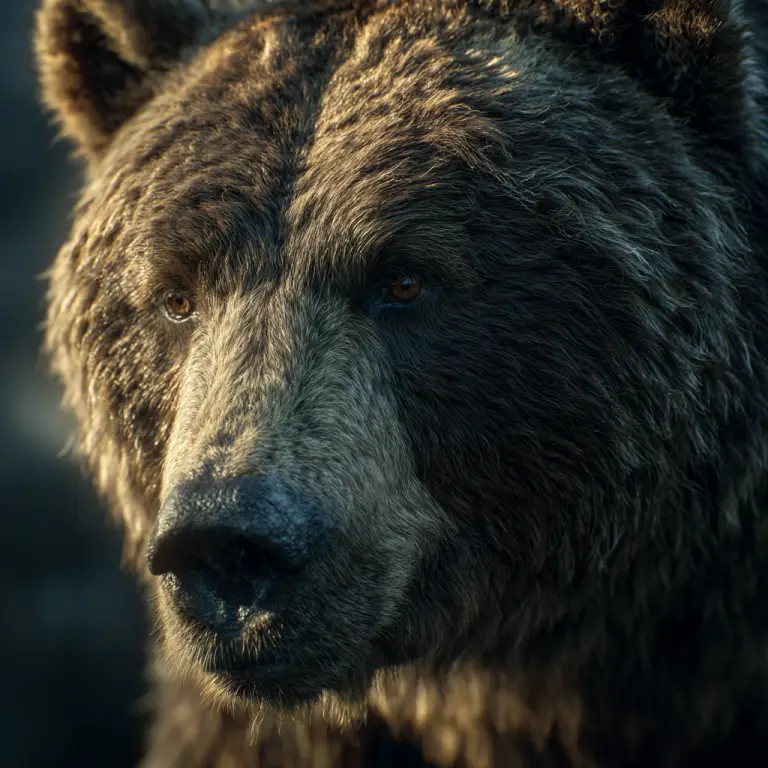There are a number of references in the sagas and other historical sources that suggest Vikings sometimes kept bears, although these animals were not ordinary pets in the way we think of dogs and cats today. Bears in the Viking Age were powerful creatures that carried deep symbolic meaning. They were associated with strength, ferocity and the god Odin, and feature heavily in Norse mythology and warrior culture.
In Iceland and Scandinavia, polar bear cubs and brown bears were occasionally taken from the wild and raised in captivity. The sagas record that chiefs, kings and jarls were gifted bear cubs, which were kept on estates as marks of wealth and prestige. These animals were symbols of status rather than companions. Owning a bear demonstrated both the power to control such a formidable creature and the resources to feed and house it.
Keeping a bear was not without its risks. Even when tamed from a young age, bears could be unpredictable and dangerous. There are accounts of accidents and attacks when bears broke loose or turned on their handlers. This made the practice controversial, and in Icelandic law codes there were restrictions on keeping bears because of the potential danger they posed to the wider community.
Despite these risks, bears held cultural significance. Warriors known as berserkers, whose name is thought to mean “bear shirt” or “bear skin,” were believed to channel the spirit and ferocity of bears in battle. This connection added to the prestige of owning a live bear. In some cases bears were trained for display, or kept as exotic gifts for royalty and foreign courts, strengthening ties between leaders.
So while Vikings did not keep bears as everyday household pets, there is clear evidence that bears were raised in captivity, used as symbols of wealth and power, and closely tied to their mythology and warrior traditions. They were rare and prestigious animals, dangerous to own but deeply admired for the strength and wildness they represented.
Alongside the occasional bear, Vikings more commonly kept animals such as dogs, cats and birds of prey. These were practical companions as well as valued symbols. Dogs were the most widespread, used for herding, guarding and hunting. They were loyal companions and often buried with their owners, showing the close bond between people and their animals. Cats were prized for keeping stores free of mice and rats, but they also held a place in Norse belief, as the goddess Freyja was said to drive a chariot pulled by cats. Falcons and hawks were highly valued among the wealthy for hunting and for the prestige they brought, with trained birds often given as gifts to rulers across Europe.
Compared to these animals, bears were rare, costly and far more dangerous to keep. While a dog or cat could live within the household and a falcon could be trained for hunting, a bear required special enclosures and constant control. This made bears symbols of extraordinary status rather than everyday pets. For most Viking households, practical and manageable animals like dogs and cats were the true companions, while bears remained a mark of power reserved for the elite.



